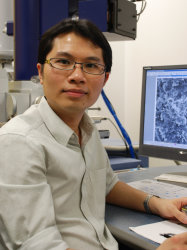BibTex format
@article{Zhou:2017:10.1016/j.jclepro.2017.09.098,
author = {Zhou, D and Wang, R and Tyrer, M and Wong, HS and Cheeseman, C},
doi = {10.1016/j.jclepro.2017.09.098},
journal = {Journal of Cleaner Production},
pages = {1180--1192},
title = {Sustainable infrastructure development through use of calcined excavatedwaste clay as a supplementary cementitious material},
url = {http://dx.doi.org/10.1016/j.jclepro.2017.09.098},
volume = {168},
year = {2017}
}

